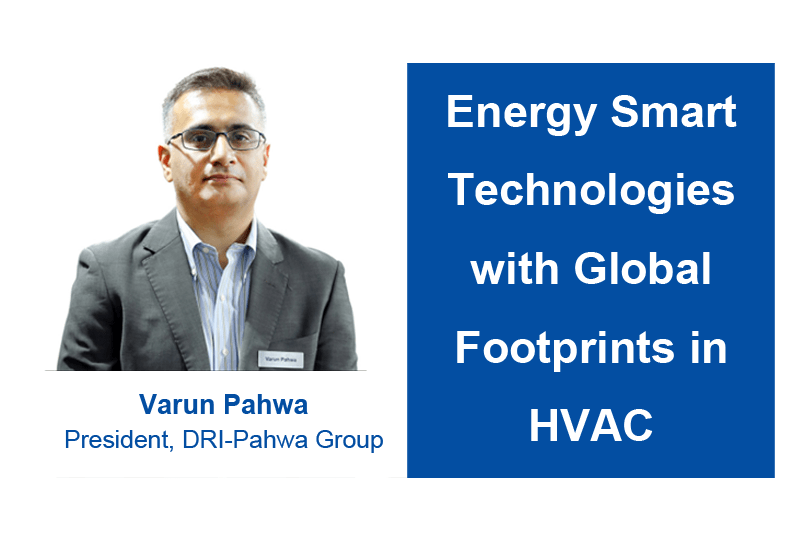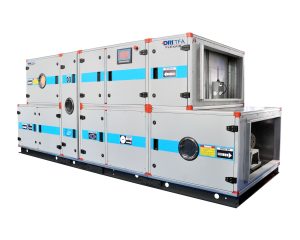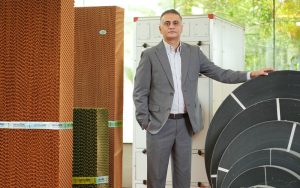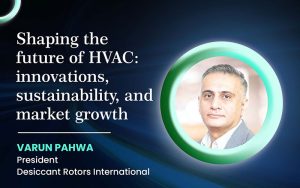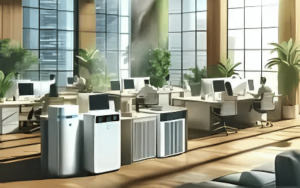Let us look at definition of the term “SMART TECHNOLOGIES” and what it entails. A basic definition of smart technology is that it is a technology that uses artificial intelligence, machine learning, and big data analysis to provide cognitive awareness to objects that were in the past considered inanimate. It is a very wide subject.
For the purpose of this article we will focus on Energy Smart technologies, which are key to the sustainability and Indoor ‘Environment’ and influence the design of buildings, especially green buildings, and thereby transforming the urban landscape. Architects, designers, MEP consultants, developers and builders, HVAC engineers and IT professionals are working in tandem to ensure that the building envelope is sustainable which entails building eco-friendly, cost effective, energy efficient spaces.
Commercial spaces which are now built all over India, not only in the metros but also, in the non-metros are built to provide comfort conditions to the people working in then irrespective of the weather outside throughout the year. The challenge is to optimize and design systems that are beneficial to both the occupant and consider energy efficiency and cost effectiveness. The end-user and therefore the government agencies’ focus, is to scale back the energy footprint.
Energy Smart HVAC systems play a very important role in a green building to reduce energy consumption, deliver a comfortable and healthy work environment.
With progressive economy, new building technologies began to transform the urban landscape. The advent of air conditioning, low-wattage fluorescent lighting, structural steel, and reflective glass made possible enclosed glass-and-steel structures that could be heated and cooled with massive heating, ventilating, and air conditioning (HVAC) systems, thanks to the availability of cheap fossil fuels.
The economic boom accelerated the pace of this phenomenon, to the point where the international style ‘glass box’ became the design icon of cities and rapidly growing suburbs. However, a small group of forward-thinking architects, environmentalists, and ecologists, began to question the advisability of building in this manner.
Keeping this in mind, never before has the shift to sustainability and green alternatives been more
highlighted than in today’s post COVID world. Governments both domestic and internationally are mandating more ventilation. Thus, energy smart technologies and products, which allows more ventilation, provide comfortable and healthy work spaces and uses less energy. With regards to the HVAC sector, there are a number of smart technologies that are already in play.
- Using Evaportaive Cooling spaces for factory cooling and ventilation and in spaces where air-conditioning is not needed
- Using hybrid systems specially for adaptive comforts
- Using renewable sources such as Solar and geothermal systems
- Various types of desiccant ehanced systems.
And of course, all these with Smart controls
Integration of DOAS (Dedicated Outdoor Air System) or Treated Fresh Air Units (TFAs) with parallel terminal system that offers a migratory path from the single all-air variable air volume systems. For example, active chilled beams combined with system design suitable for tropical climate, the DOAS becomes an excellent choice to address IAQ (indoor air quality), and humidity control and help buildings become green.
Additionally, EnergySmart technologies that can keep track of indoor and outdoor temperatures in real time, can help to provide actionable insights that allow smart HVAC systems to adjust temperatures and make needed adjustments to ensure minimal energy consumption and optimize use of resources for negligible wastage. IP enabled products also play a large role in efficiency, integrating legacy systems, enabling cloud based usage and tracking and tracking data to enable high levels of performance for both complex and simple buildings.
Energy Smart HVAC systems play a very important role in a green building to reduce energy consumption, deliver a comfortable and healthy work environment
Smart technology is making an appearance worldwide on the HVAC scene, as this becomes more prominent, it is important to take note of standard codes from authorities like ASHRAE and ECBC that ensure best practices. HVAC systems are undoubtedly integral to green buildings. With the advent of all these new technologies, the horizon is filled with new and exciting possibilities. Unparalleled advances in mobile, cloud-based, AI and IoT technologies are heralding the advent of data analytics that has a direct impact on the way a building maintenance and operations are imagined, engineered, created and run.
It offers the opportunity to create preemptive strategies using these insights to ensure best efficiency and sustainable solutions. With the climate crisis at the top of the list, the UN’s Sustainable Development Goals become of deeper significance as we work toward a sustainable, kinder future. Companies, industry bodies and governments alike are investing and supporting initiatives like these, to ensure a better greened future for the next generation.
‘Smart’ HVAC solutions increases overall Lifecycles
Built spaces are becoming ‘smart’ and smart technologies are being introduced to traditional HVAC solutions to not only make new spaces ‘smart’ and sustainable but also, to enhance and save running cost in existing utilities.
Sensors and controls using AI become main pillars of smart products and buildings, reducing or even eliminating wastage of resources, lowering and mitigating unexpected maintenance costs, leading lower downtime through predictive maintenance and thus, improving the overall lifecycle of the HVAC systems.


